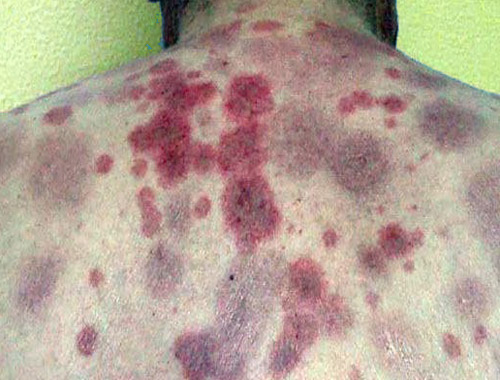Bone Marrow Disorders (Myelodysplasia, Myelodysplastic syndromes)
Bone marrow is the spongy tissue inside some of your bones, such as your hip and thigh bones. It contains immature cells, called stem cells. The stem cells can develop into the red blood cells that carry oxygen through your body, the white blood cells that fight infections, and the platelets that help with blood clotting. If you have a bone marrow disease, there are problems with the stem cells or how they develop. Leukemia is a cancer in which the bone marrow produces abnormal white blood cells. With aplastic anemia, the bone marrow doesn't make red blood cells. Other diseases, such as lymphoma, can spread into the bone marrow and affect the production of blood cells. Other causes of bone marrow disorders include your genetic makeup and environmental factors. Symptoms of bone marrow diseases vary. Treatments depend on the disorder and how severe it is. They might involve medicines, blood transfusions or a bone marrow transplant; The Disorders; Leukemia, a cancer of the white blood cells, can affect any of the five WBC types. It begins with one abnormal cell that begins to continuously replicate (clone) itself. The resulting leukemic clone cells do not function normally. They do not fight infections, and as they build up they inhibit the production of other WBCs, RBCs and platelets. Patients with leukemia may have frequent infections, fatigue, bleeding, bruising, anemia, night sweats, and bone and joint pain. The spleen, which filters the blood and gets rid of old cells, may become enlarged, as may the liver and lymph nodes.; Myeloproliferative disorders (MPD) are a group of four diseases centered in the bone marrow, and characterized by the overproduction of a precursor (immature form) of a marrow cell. When a particular type of blood cell is needed, undifferentiated stem cells in the marrow begin to change, becoming the immature blast forms of whatever cell is in short supply. These blasts mature to become one of the five types of white blood cells, to form red blood cells, or platelets. Since only fully mature cells normally leave the bone marrow, it usually contains a mixture of cells in various stages of maturity.; In MPD conditions, excessive production of a cell's precursor leads to an increased number of that type of mature cell and an increase or decrease in the number of other blood cells (which may be inhibited and crowded out). This results in symptoms related to blood cell overproduction, shortages, and dysfunction throughout the body.; Myelodysplastic Syndrome (MDS), is a group of diseases characterized by abnormal bone marrow cell production. In MDS, a common feature is that that not enough normal blood cells are being made. This leads to symptoms of anemia, infection, and excessive bleeding and bruising. MDS syndromes are classified by how the cells in the bone marrow and blood stream look under the microscope and include: refractory anemias, Ph-negative chronic myelocytic leukemia, chronic myelomonocytic leukemia, angogenic myeloid metaplasia). Over time MDS tends to progress to acute myeloid leukemia.; Aplastic anemia is associated with a loss of cell precursors (usually RBC), due to a defect in the stem cell producing them, or due to an injury to the bone marrow environment. Some aplastic anemias are caused by exposure to chemicals such as benzene, radiation, or certain drugs. A few are due to rare genetic abnormalities (such as Fanconi's anemia), or associated with an acute viral illness (such as human parvovirus) but for about half the cases the cause is unknown.
